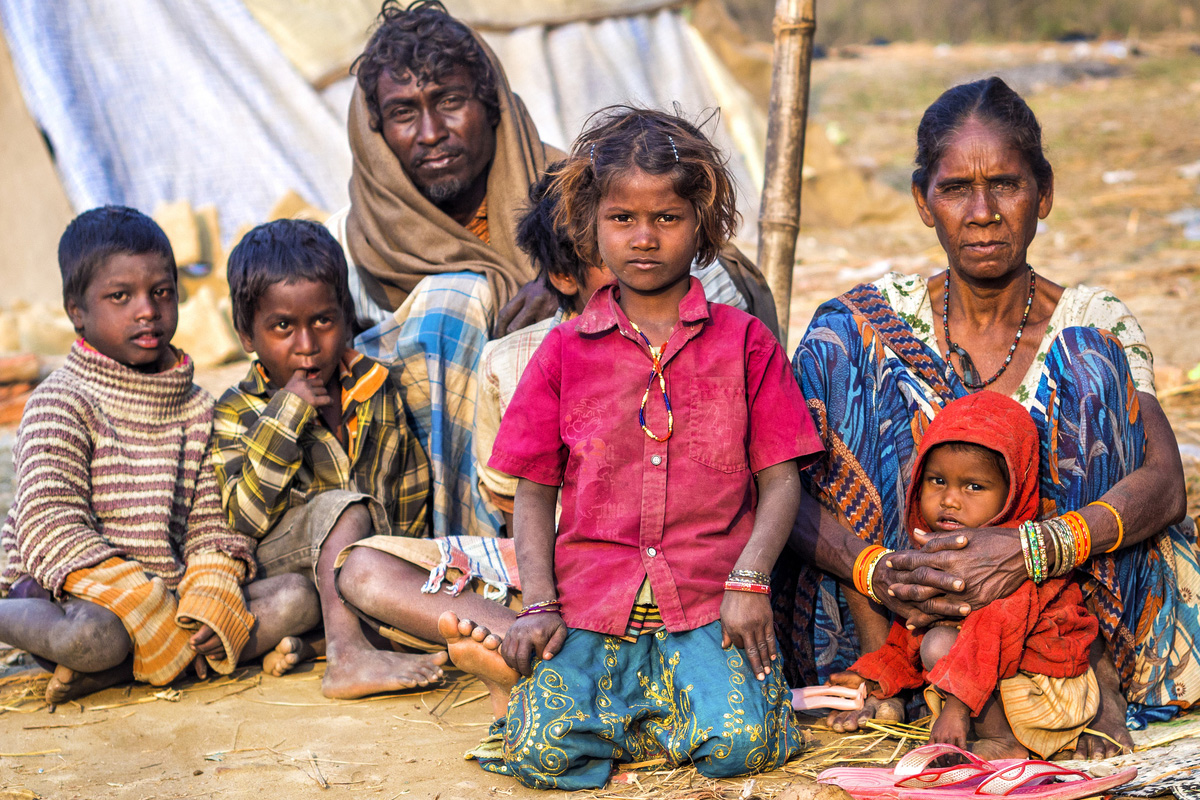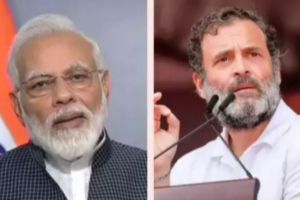Macroeconomic and growth-led policies are often premised on two assumptions; firstly, that poor and malnourished people are physically and psychologically equipped and ready to participate in vigorous economic activity and secondly, that although they are excluded from economic development, somehow the dynamic results of growth will filter down to them, solve their problems, and render them capable of gaining from the development process.
But experience reveals that countries that do not prioritize social sectors such as health and nutrition, and fail to address basic needs of people, cannot achieve sustained and high rate of economic growth and human development. Even if development opportunities exist, poor families cannot often take advantage of them.
The capability approach of the Nobel Laurate economist Amartya Sen explains that a person’s capability to live a good life is defined in terms of the set of valuable ‘beings and doings’ like being in good health or having loving relationships with others to whom they have real access. Indeed, poverty vis-à-vis resultant endemic hunger stand in the way of achieving that capability. For them, there is no long-term solution.
The vicious cycle of hunger begins with low-birth weight babies born in food-deficit homes, and who remain undernourished throughout childhood and are unable to develop their mental and physical capacities even to average levels. Upon reaching adulthood, they are stunted, wasted and inadequately skilled, and therefore forced to sell their only asset, physical labour, at any available wage rate.
As may be expected, the market pays only lowest possible wages for such unskilled labour thus extending the initial food shortage-poverty scenario into a lifelong one. Women from ‘hungertrapped’ households marry young, put in enormous amounts of physical labour, and suffer severe nutritional problems while fighting to survive. Caught in the trap of under-nourishment and anemia, they give birth to weak and vulnerable babies, perpetuating the cycle of hunger and poverty.
The so-called ‘Barker Hypothesis’ also posits that maternal dietary imbalances at critical periods of development of womb can trigger an adaptive redistribution of fetal resources (including growth retardation). Such adaptations affect fetal structure and metabolism in ways that predispose the individual to later lifestyle diseases. Thus, intergenerational cycle of malnutrition sets in. Hence, in order to address food insecurity in the long run, it is imperative to break this cycle of hunger.
On an individual scale, hunger occurs when a person consumes insufficient amounts of calories. Literally, hunger means the physiological desire to consume food. Hunger cues are physical feelings that originate in our brain. Neuropeptide Y (NPY) is the neurotransmitter responsible for feelings of hunger. When our body is running low on glucose and glycogen, it releases a hormone called ghrelin. When this hormone reaches the brain, it releases NPY, and we start craving sweet or starchy foods.
Once glucose level rise, our body releases ghrelin’s counterpart, leptin. When leptin reaches the brain, it inhibits NPY and we feel like we have had enough food. There is considerable confusion about what constitutes hunger, malnutrition and starvation. Hunger is the most widely used term to indicate food deprivation. The word hunger is used in the sense of ‘appetite’ caused by an empty stomach. People suppress their hunger by availing of non-nutritious ‘pseudo foods’ like tubers and mango kernels, tea or cheap intoxicants.
When poor access to food results in physiological damage to the body, then the person is malnourished. If the denial is prolonged to such an extent that it threatens survival or makes people vulnerable to curable ailments due to malnutrition, then they are living with starvation. When such people die, the starvation death is proved by a post-mortem that shows a completely empty belly. However, subjective definitions and physiological cause of hunger do not lead automatically to an understanding of the extent of food deprivation.
As defined in The State of Food Insecurity 2001, “‘Food security is a situation that exists when all people, at all times, have physical, social and economic access to sufficient, safe and nutritious food that meets their dietary needs and food preferences for an active and healthy life.” The emphasis on consumption, the demand side and the issues of access by vulnerable people to food, is most closely identified with the seminal study by Prof. Sen. Eschewing the use of the concept of food security, he focuses on the entitlements of individuals and households.
Scientists have been studying food security for decades, and for many years they relied on crude metrics such as food available per capita, or the rate of stunting among children. However, these methods come with problems. The amount of food grown by a country or stored in national reserves do not account for inequalities in access to that food, while population level metrics like rates of stunting are confounded by things like infectious disease and parasites (sanitation).
Today, scientists use a new metric called the Food Insecurity Experience Scale, which measures people’s experiences of hunger, rather than just crude proxies for hunger. It involves questions about skipping meals, running out of food, and worrying about having enough to eat over the previous year. As one of the most informative and crossculturally valid metrics of food insecurity, it has been selected as one of the key indicators for the second Sustainable Development Goal of Zero Hunger. Now, with the World Hunger Clock, it is possible to explore this important metric at high spatial resolution including projections into the future for the entire world.
Due to the impact of coronavirus on the global food system, 2000 and 2021 will see the highest levels of hunger, because people lacked resources to purchase the food they would like, while 800,000 people are severely food insecure, going entire days without eating once. Let us consider India. India has moved from food shortages to self-sufficiency in production, built up substantial buffer stocks, and is even exporting foodstuffs.
Democratic dialogue has taken place on prevention of famines as a social commitment, but that has not yet happened with persistent hunger and chronic undernourishment. Around 19 crore Indians go to bed hungry every night. About half of Indian children are chronically undernourished, and more than half of adult women suffer from anemia.
The terrible combination that we have in India, of immense food mountains on the one hand and the largest conglomeration of undernourished in the world is a paradox. Every year, the Global Hunger Index (GHI) tracks hunger and malnutrition across the countries using four indicators: (1) undernourishment: share of the population with insufficient caloric intake; (2-3) Child wasting: share of children under age five who have low weight for their height, reflecting undernutrition; child stunting: share of children under age five who have low height for their age, reflecting chronic undernutrition; and (4) child mortality: the mortality rate of children under the age of five.
Based on these four indicators, the GHI determines hunger on a 100-point scale where 0 is the best possible score (no hunger) and 100 is the worst. India has slipped to 101st position in the GHI 2021 of 116 countries, from the 2020 position of 94th. With a score of 27.5, India has a level of hunger below its neighbours, Bangladesh, Nepal, and even Pakistan. The GHI report also includes the most up-to-date data available at the time of its editorial deadline in July and applies the same standards to all countries to ensure comparability.
For India’s 2021 GHI score, data on the four component indicators came from different sources. In his seminal book Ash in the Belly: India’s Unfinished Battle Against Hunger, Harsh Mander, a social activist, has described how, despite years of spectacular economic growth and achieving self-sufficiency in grain production, hunger in India is not only persistent but intergenerational. He has also described how hunger is not just limited to physiological dimension of an unappeased belly and chronic fatigue, but also characterized by psychological and social deprivation that come from loneliness, shame and low self-esteem.
The poor and the hungry have learnt to live in a permanent state of destitution. To do so they eat food shunned by others, such as the poisonous herbs that grow in the wild, or beg for stale leftovers or starch water left over from boiling rice in richer households, or in extreme cases by selling their children in order to keep them and the ones left behind alive. When the wailing of infants gets too much, mothers give their fingertips laced with tobacco or natural intoxicants, to infants to suck.
Sometimes babies are given cannabis or khaini or cheap country liquor. Those help them sleep with nothing in their stomachs. Documentation of these real stories by Mander in his book is one proof of the sad state of Indian poverty and hunger. Hunger is preventable. It is not difficult to end hunger in India. It is not like that we don’t have the food to feed the hungry. India produces more than enough food to provide for all its citizens. It is primarily a problem of general poverty. The problem lies in access to food.
Amartya Sen’s entitlement theory basically approaches food security from an access point of view. It is particularly important to pay attention to employment opportunities. Moreover, what we don’t have is the political will that drives a zero-huger policy. Solving world hunger involves investing in smallholder family farmers, health care, financial services and increasing women’s access to resources. Above all, in the words of Revered David Beckmann: “It is important for people to realize that we can make progress against world hunger, that world hunger is not hopeless. The worst enemy is apathy.”
(The writer is a retired IAS officer)











